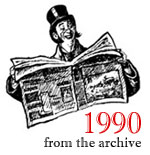
Trinitarian Delight
Guest Column
“Trinity” is a formula meant to express the inner nature of God encompassing three distinct persons — the most basic of all our doctrines about God. Trinity is a word-concept about which tracts, dissertations, articles, and books have been written — and have remained widely unread. Trinity is also a word whose precise meaning has caused strife, dissension, and even schism in the history of the Church.
Trinity is also, for most people nowadays, just a word, another piece of our religious vocabulary — which may or may not conjure up some elemental notion of what God is like.
When we mentally tune into the word Trinity, what picture appears on the screen of our minds? Snow? Triple imaging? Test pattern? Nothing? Many people might think of a triangle — equal angles enclosing one space with an all-seeing eye in the center. That’s an ancient symbol for the Trinity. People might also think of a shamrock or three-leafed clover. Some folks might associate three intertwining circles with the Trinity — although my own mind might run more quickly to Ballantine Ale.
Perhaps the most fetching description of the Trinity comes to us by way of a venerable limerick: “We surmise that God’s a community, Three persons in a single unity. But how can it be, We simply can’t see, We can only revere the mystery.”
You May Also Enjoy
The blossoming of Christian Rightist organizations in the mid- and late 1960s made me increasingly nervous about the injurious effect of political conservatism on evangelicalism.
Pro-abortion Catholic politicians are unlikely to experience problems with their new bishops in coming years.
It took a few years, but the Vatican has ruled that the former vocations director for the American College of Louvain is a homosexual child abuser.

